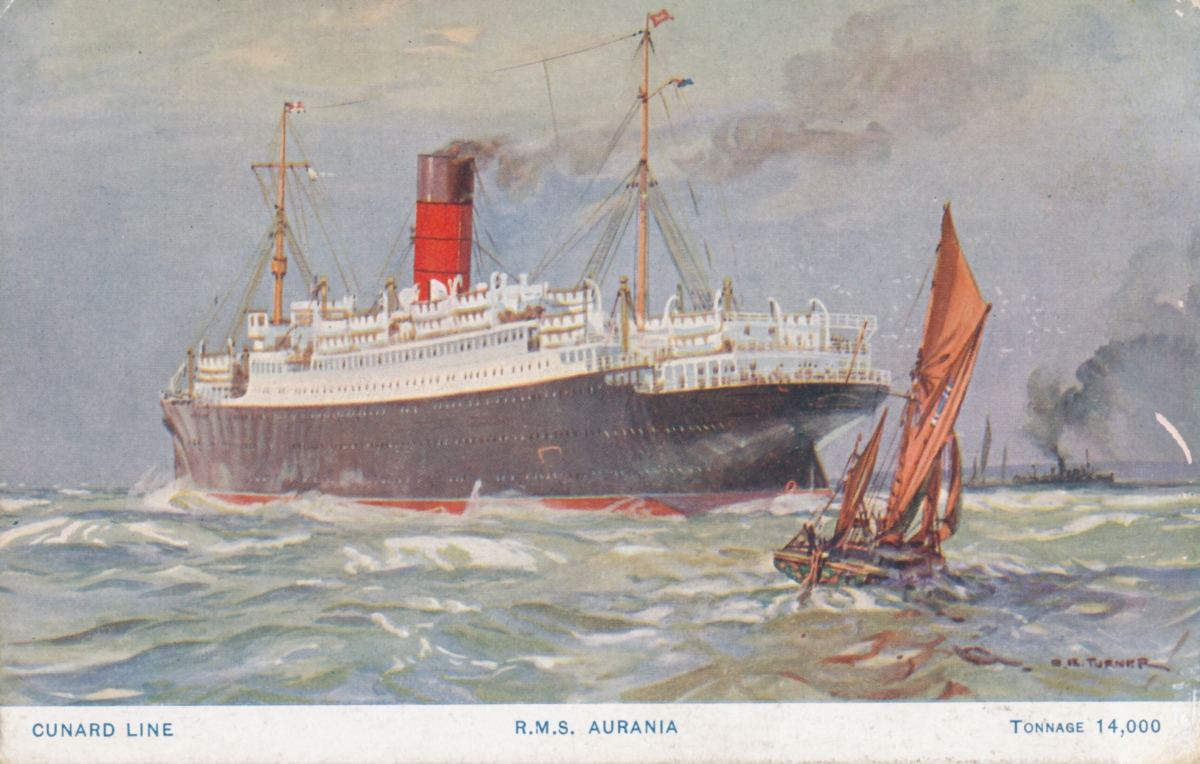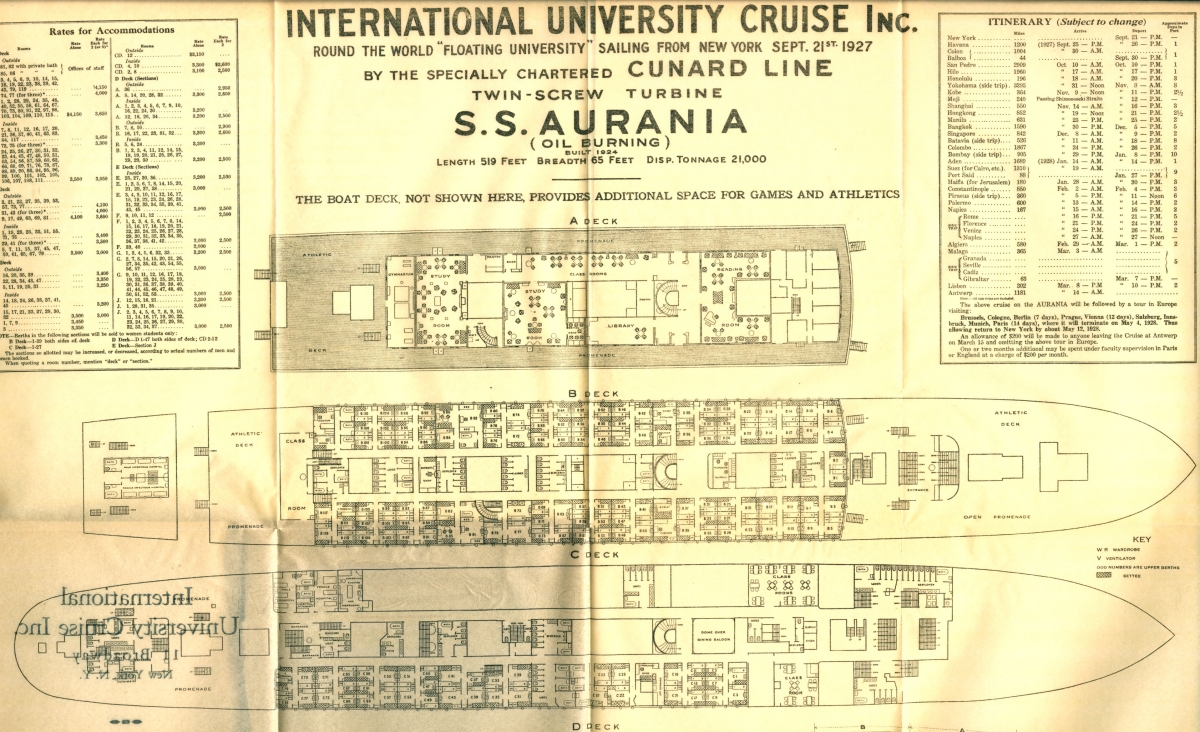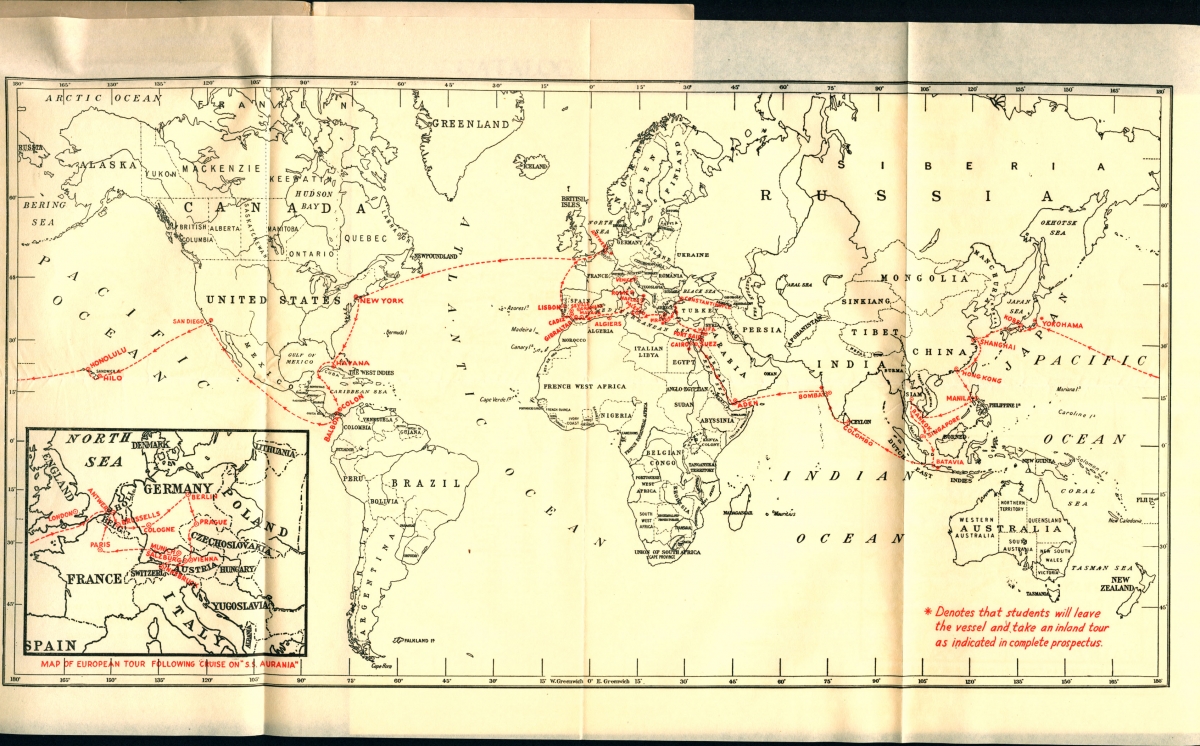A curious item was recently obtained by the Published Collections Department. It is a catalog for the 1927-28 academic year, published by International University Cruise, Inc. The catalog is entitled Floating University “Aurania” for Men and Women Students. This was a legitimate and licensed effort to have students experience the world firsthand in an age before air travel, study abroad programs, or the internet.
While the concept was new to me, apparently the idea of a floating university had been kicking around on and off in the educational world since the 1880s. The first successful world tour of a floating university occurred in 1926, however, one year before this catalog was produced.
James Lough, a psychology professor at New York University, was the mastermind behind that first cruise on the S.S. Ryndham. Facing delays and difficulties, he lost the support of NYU and had to seek private financing. Andrew McIntosh believed in Lough’s idea and was persuaded to finance the voyage. 504 students and 63 members of faculty and staff successfully sailed around the world and into history. Upon his return, though, Lough found that he had lost his job at NYU. He also lost his financial backing shortly thereafter, as McIntosh and Lough differed in their opinions as to how such tours should continue to operate.

The Aurania was a new, state-of-the-art cruise ship, built for Cunard Lines in 1924. Image provided courtesy of Simplon Postcards, the Passenger Ship Website at www.simplonpc.co.uk.
Andrew McIntosh set out to create his own floating university. The result was International University Cruise, Inc. McIntosh worked out an arrangement with the Cunard Steamship Company and secured theS.S. Aurania, a modern oil-burning vessel, for his purposes. McIntosh lined up an impressive list of faculty members, men and women drawn from various schools of higher learning such as Stanford, Harvard, the College of William and Mary, the University of Pennsylvania, and Haverford College. He advocated strongly for coeducational opportunities, seeking to provide an equal number of male and female students. And McIntosh envisioned that the ship would stay for two to four weeks at various ports around the world, in order to truly expose the students to life and customs in other countries.

Great care was taken to plan the best use of available space on the S.S. Aurania in order to provide students with all the surroundings of a proper university. Bunks, dining rooms, classrooms, study rooms, a library, a reading room, a gymnasium, and an athletic deck were all planned to keep the students occupied while on board.
The goal was worthy, but the S.S. Aurania did not set sail. Two competing floating universities canceled each other out in 1927, as neither Lough nor McIntosh could secure enough students for either voyage. But the catalog we hold provides a fascinating glimpse into the planned scope of McIntosh’s operation. Both institutions succeeded in offering trips the following year. In 1929, the institutions would merge and continue to offer university trips into the late 1930s. World War II would put an end to such excursions, however.

The Floating University was scheduled to depart New York on September 21, 1927. It would have sailed through the Panama Canal on its way west around the world, with plans to visit Japan, China, the Philippines, Siam, Batavia, India and Arabia before sailing through the Suez Canal to visit Egypt, Turkey, Algeria, Greece, Italy, Spain, Portugal, and Belgium before making the journey back home to New York.
SOURCES:
International University Cruise, Inc. Floating University “Aurania” for men and women students. Catalog 1927-28. New York: The Corporation, [1927].
Tate, E. Mowbray. Transpacific steam: the story of steam navigation from the Pacific Coast of North America to the Far East and the Antipodes, 1867-1941. New York: Cornwall Books, 1986.
Max Moeller is Curator, Published Collections at Hagley.
